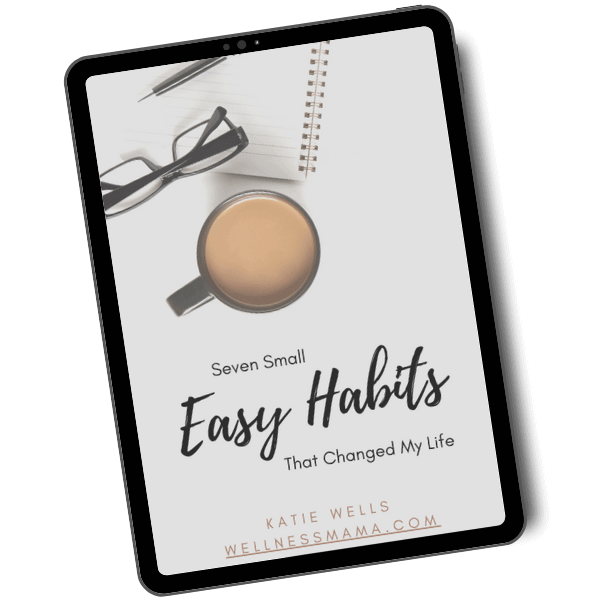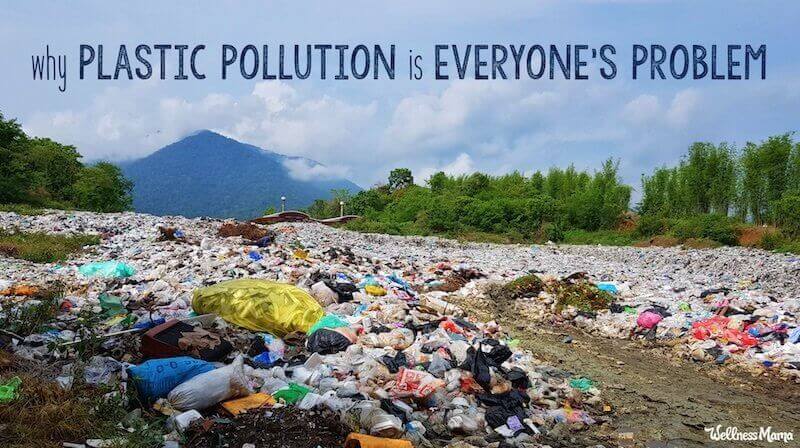You may know my stance on plastic and that I try to reduce or eliminate it from our home, but the fact is plastic is so pervasive in our modern lives that it’s almost impossible to get away from. Regardless, plastic pollution is a huge (and growing!) problem that we all need to do something about now. In fact, companies and organizations (as well as everyday families) are becoming increasingly aware that we must do something about the plastic problem immediately.
Let’s look at the facts…
Plastic in the Environment
As I wrote about in another post, there are many troubling statistics about plastic production and its effect on the environment and wildlife.
In a nutshell:
- Plastic production is huge and increasing each year.
- Most plastic that is created is single-use.
- Plastic is polluting almost very inch of the planet.
- Plastic debris harms thousands to millions of marine creatures every year.
- The Great Pacific Garbage Patch in the North Pacific Ocean is mostly made of microplastics.
Where is all this plastic coming from? Here are common sources we probably interact with or use every day:
- Single-use plastic bottles are one of the biggest pollutants in existence, clogging up waterways and oceans. According to Earth Day, Americans purchase about 50 billion single-use plastic water bottles per year. This averages to about 13 bottles per month for every person in the United States. Yes, some of us use fewer (even way fewer) than that, but that means others are using more (even way more) than that average. Many of these bottles are not recycled.
- Plastic shopping bags are another huge concern. Only 1 percent (or less) are returned for recycling. Single-use plastics like grocery bags are only used for an average of 12 minutes and then sit for hundreds of years in a landfill (if not recycled).
- Fiber from synthetic fabrics make their way into fresh water through washing machines and also enter the air after shedding from garments (one reason I stopped using microfiber cloths for cleaning). Estimates claim that there are roughly 5.25 trillion pieces of large plastic and microplastic floating in the ocean.
But plastic in the environment is not just affecting animals and waterways. It’s affecting humans directly. The chemicals found in plastic are found in air, dust, and food.
Plastic in Our Bodies
We already knew that fish are ingesting micro-plastics that are polluting the water. But that doesn’t mean it’s only a problem for fish (or people who eat fish). Plastic is making its way into and up the food chain.
A small trial at the Medical University of Vienna performed in 2018 found plastics in the excrement of 8 people from 8 countries. While it’s easy to imagine that these people could have eaten fish that also ingested plastic, this trial noted that only six out of eight participants ate seafood. That means the other two ingested plastic in another way — potentially through food wrap, plastic straws, or even the air.
This recent study is the first to find clear evidence of plastic in the human body but is likely not the last. More studies are needed to explore this issue, but researchers concluded that these microplastics in the human body may disrupt immune function in the gut and cause other issues.
Plastic Isn’t Safe
While we don’t know for sure how ingesting plastic affects the human body, we have some clues. For example, a 2018 study found that plastic caused intestinal damage in sea animals.
We also know some important things about the chemicals in plastics and how they affect the body.
- BPA is often added to plastics to make them more durable. But BPA is a known endocrine disruptor and can mimic the effect of estrogen in the body. This can then lead to weight gain and hormone imbalance. It may also cause deformities of the male and female genitals, premature puberty in females, and decreased sperm quality. It can also cause increases in breast and prostate cancers, infertility, miscarriages, obesity, type 2 diabetes, allergies, and neurological problems.
- Phthalates are another chemical often found in plastics. They are considered to be especially harmful to men and boys because they can cause reduced testosterone and infertility in men. Phthalates are also linked to immune system impairment and many other problems. The European Union banned them in 2005 and many other countries have banned them as well.
But… I Recycle!
While it’s important to recycle whenever possible, it simply isn’t enough.
Even if something makes it in the recycle bin, if we don’t rinse out containers well enough or accidentally put something into the wrong bin, we may have made the whole bin unrecyclable. In that case, the entire bin is sent to the landfill.
No-sort recycling (where you are supposed to throw everything in together) isn’t any better. Combination materials like plastic coated cardboard or squeeze pouches are some of the most confusing materials. These materials often boast that they are recyclable on the packaging, but in reality, they are only recyclable at a TerraCycle program.
As Bloomberg.com points out, this has caused so much recycling contamination that as much as 91 percent of recyclable plastic ends up in the landfill (or worse, the ocean).
In addition, now that oil prices are low again, it’s cheaper to produce new plastic than to recycle (or use recycled) plastic. A 2016 article in Business Insider explains that using new plastic is also more desirable because it’s easier to get the chemical composition just right.
Even if we recycled every possible water bottle and plastic bag (neither of which is likely), it wouldn’t be enough. We are producing more plastic each year than the year before. Recycling is important, but refusing plastic whenever possible will make a much bigger impact on the problem of plastic pollution.
What to Do Instead
If recycling isn’t the answer, making changes to reduce our consumption of plastic is the next step. There are many things we can do individually to make a difference.
Support Legislature
We can continue to support new legislature that helps reduce or ban single-use plastic in our environment. The National Conference of State Legislatures allows you to search for bills by topic of interest (air quality, wildlife, water). Also call your local city or township office to find out what programs or groups you can follow to stay informed and participate in local events. Your local nature center or Sierra Club may be another good resource.
Demand Better Packaging
Money talks, and if we refuse to buy plastic packaging, companies will adapt to get our business back. Additionally, when we support companies that are low-waste, we’re encouraging more companies to follow suit. Some of the worst containers include:
- Styrofoam take-out containers
- Single serving containers (like yogurt and keurig containers)
- Styrofoam peanuts
- Combination materials (used for chip bags, food pouches, etc)
Instead, look for bulk packaging or bring your own to the bulk food aisle. Many food co-ops and natural food stores support this practice.
- Use cardboard or paper when possible (get your meat from the meat counter and ask them to wrap it in butcher paper)
- Bring your own reusable bags.
- Look for packaging made from recycled materials.
- Look for products with the least amount of packaging as possible (ideally no plastic).
- Don’t use produce bags. If you have your own grocery bags to carry your produce home in, you’re saving at least a few plastic produce bags every trip.
Refuse
Whenever possible, refuse plastic utensils, bags, and straws. Bring your own along if you think you’ll need these items.
A harder thing to do (but just as important) is to refuse plastic toys whenever possible. Look for wooden and fabric toys instead. If you must buy plastic, only buy it secondhand.
Follow Recycling Rules
Follow the guidelines on your recycling containers. Don’t put in anything that doesn’t meet the specifications.
Find Alternatives
It’s much easier to refuse items if you already have your own reusable one. Here are some ideas (and you can see my full list here):
- Stainless steel plates: These are lightweight, food-grade stainless steel that is dishwasher safe, oven safe and unbreakable! We use them every day and I think they are the best investment I made for healthy dishware for my kids.
- Zip Top: We started to use these when we travel or are away from home for an extended period of time. They are a perfect replacement if you use ziploc baggies and we have added nuts, seeds, fruit or even our favorite cottage cheese into them. They are made from food grade silicone and are dishwasher safe.
- Stainless steel cups: These cups are just as good as the plates and work well for little ones who like to get their own drinks.
- Stainless steel bowls: These unbreakable bowls are some of the most used items in our kitchen.
- Stainless steel latch containers: These are non-breakable, spacious, and great for freezer storage.
- Glass mason jars: I like quart and half-gallon size jars for storing liquidy foods like soups, sauces, broth. They can even be used for leftover casseroles and as drinking glasses.
- Silicone food storage: I love these collapsible fridge storage containers. They don’t take up much room in the cabinets when stored and are easy to stack in the fridge.
- Glass and silicone storage: Lifefactory makes some great all-glass food storage containers. They also have a silicone cover to help avoid breakage.
- Pyrex glass containers with lids: These are some of the least expensive glass containers. They do have plastic tops but are a good choice for the price.
- Glasslock oven-safe food storage: I love this set of glass containers and use them all the time.
- Reusable grocery bags: These are great for avoiding plastic bags while you’re out. They’re also collapsible for easy storage.
- Produce bags: I like these easy to wash produce bags for grocery store trips.
- Metal or glass water bottle: We fill these up and take them every time we leave the house.
- Bamboo or stainless steel straws: Replace single-use straws with more sustainable options. Many even come with carrying cases or bags to take them on the go.
- Tea bags: Instead of buying tea bags (that may have plastic in them) try a loose leaf infuser.
- Soap nuts: Soap nuts help avoid the plastic containers that laundry detergent comes in. You can also buy a very concentrated laundry detergent to cut down on plastic waste.
- Concentrated plant-based cleaner: I’ve replaced pretty much all of my cleaners with Branch Basics, which is so concentrated it replaces the need for 12-13 bottles.
If you replace one plastic item with a reusable, non-plastic alternative when you have the money, eventually you’ll have created a nice collection of healthy and sustainable items.
Final Thoughts on Plastic Pollution
This global problem can seem too big to do anything about, but doing something is better than doing nothing. Human health and the environment will be better off with every sustainable choice we make. Eventually, our demand will make plastic production unprofitable for many companies and sustainable packaging will become mainstream.
This article was medically reviewed by Dr. Robert Galamaga, whois a board-certified internal medicine physician. As always, this is not personal medical advice and we recommend that you talk with your doctor or work with a doctor at SteadyMD.
What are your tips for reducing plastic?




Leave a Reply